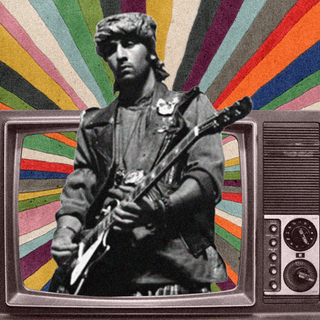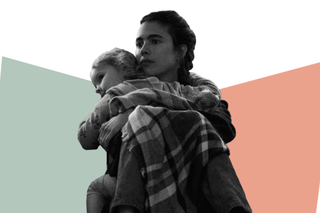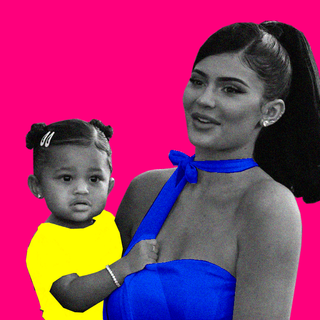
How ‘Maid’ Helps Understand Violence Without Blood and Bruises
Like millions of women, the protagonist, Alex, is shown going through domestic and bureaucratic violence. But the gaze doesn’t dehumanize her.

Few stories are more challenging to portray with empathy and humanity than those about domestic violence and poverty. Maid (2021), released on October 1st on Netflix, is one of the very few that straddles the line between depicting how people lose their autonomy without stripping the person of their own agency in the process.
The limited series, based on Stephanie Land’s memoir ‘Maid: Hard Work, Low Pay, and a Mother’s Will to Survive,’ follows the story of Alex, played by Margaret Qualley — a single mother. She flees an abusive relationship with her two-year-old daughter in tow and picks up shifts as a housekeeper. She confronts several forms of violence — emotional, bureaucratic, and structural. She carries not only her own trauma but bears the weight of her mother, Paula (Andie MacDowell), too.
Not once, through the entire ordeal, does the series linger on Alex’s dehumanization by the experience of domestic abuse and poverty. In Maid, Alex is a woman who is nearly broken down by her partner, her parents, and a grueling government welfare system that does the opposite of what it promises. What sets it apart is how it shows us that being a survivor of violence involves looking at what happens — what has to happen — beyond the experience of violence.
That is not to say that what she goes through isn’t dehumanizing. The people and systems Alex interacts with sometimes ensure that she is treated as less than human, someone whose existence makes no difference to the world at large. But the gaze with which audiences follow her journey does not dehumanize her. We are shown that she does matter in her own right, that she is a whole person with a rich inner life who deserves fulfillment and safety in her own terms, and that she does not have to undergo a second re-enactment of physical, visceral, and visible violence onscreen as “proof” for viewers to grant her the right to seek out a life of freedom.
Much of Alex’s troubles amplify after she leaves her emotionally abusive partner. Take the debit accounts on the screen that appear every time Alex makes a monetary transaction. The powerlessness in being unable to buy breakfast or fill gas without the mental cash register blaring protest is violence. The mountains of paperwork and legalese involved in finding a roof over one’s head while having to scrape through a few dollars for the day’s food and gas is violence. The betrayal from people who appear to have benign, even kind intentions while helping you out of rock bottom is violence. Most importantly, violence to the psyche, breaking down one’s control over resources and ultimately, their own free will, is violence.
Throughout the first half, Alex’s constant refrain is that she does not have bruises or blows, so she cannot be “counted” as someone who deserves the label of a domestic violence survivor. Along the way, she understands that the violence is not necessarily physical — underlying it all is the slow, methodical, chipping away of one’s control over their own life. There is profound distress to the psyche in having to grovel and depend on others’ favors and temperaments, mainly when those tasked with loving and protecting you fail, as is the case with Alex.
Related on The Swaddle:
Netflix’s ‘Unbelievable’ Shows Justice Begins With Police Believing Sexual Assault Survivors
Then, there is intergenerational violence. Paula, arguably the beating heart of the series, is an artist with an unmedicated mental illness, unable to be the mother Alex needs her to be. Beneath her free-spiritedness is a vulnerability and a violent past that lie at her core like a flesh wound, one that Alex has to tend to while healing from her own. If Alex ever manages a few days of respite from worrying about total starvation and destitution, it is despite the systems that are supposedly there to keep her afloat.
This is violence, both to herself and Paula. There are men who are responsible for it, but there is also poverty, mass disenfranchisement, and a system designed to take away the dignity of life if someone falls off the beam even momentarily. This is violence that is difficult to pin to a single bad guy or a villain. It is an older, much larger, and much more powerful form of violence that individuals can survive but never defeat alone.
Through the course of the story, Alex finds herself sinking at several points. However, when she is at rock bottom, we viscerally experience rock bottom with her rather than at her expense. Alex is not a prop in a cautionary tale. At the same time, her resilience is not glorified as it so often tends to be, as it would have been if this were a different story. The series never resorts to the trope of a revenge drama because the story is about moving forward, not backward, in time and circumstance despite everything.
In one compelling scene, Alex learns to find her anger and use it. The scene calls to mind Audre Lorde’s essay, ‘The Uses of Anger,’ in which she writes: “I have lived with that anger, ignoring it, feeding upon it, learning to use it before it laid my visions to waste, for most of my life. Once I did it in silence, afraid of the weight. My fear of anger taught me nothing. Your fear of that anger will teach you nothing, also.”
Lorde was responding to racism, but the idea holds weight for systemic disempowerment in general. As a single mother survivor of domestic abuse and living in poverty, Alex finds ways to survive by recognizing her own agency against overwhelming odds threatening to undermine it.
Admittedly, Maid might have been a very different story if it were about women of color trying to support their children while escaping a cycle of poverty and abuse. It might have looked different and may not have had the same ending as Alex — a white woman’s — story. There is the question of whether the gaze through which we see her would have been as sensitive and empathetic had it featured someone whom various actors in the red tape system themselves would not have regarded with as much empathy.
However, what makes the series stand out is that it doesn’t rely on bodily violence, blood, gore, allegories, or a voyeuristic gaze to point out how human beings can, and so often do, undergo dehumanization. What we see on Maid is the reality for millions of women globally. In contrast to dystopias that tell the story of the brutality of systemic disenfranchisement, there is nothing dystopic about women fleeing a cycle of violence in the home, only to come up against crushing odds in a gamified government maze. It is happening now.
Maid is further elevated by its warmth and compassion that underlies the most difficult of relationships. How far and for how long are we willing to go for the people that we love is one of the oldest questions that stories have grappled with. In Maid, we learn that what matters is how far one has come, how much one has survived, and how much more one can take against it all. To experience this is violence; to survive it is to see what lies beyond violence. Maid is one of the few stories of our times, about our times, that deems it necessary to go there.
Rohitha Naraharisetty is a Senior Associate Editor at The Swaddle. She writes about the intersection of gender, caste, social movements, and pop culture. She can be found on Instagram at @rohitha_97 or on Twitter at @romimacaronii.
Related


Woe Is Me! “Constant Rejection Is Making Me Moody. How Can I Be Less Mean?”
